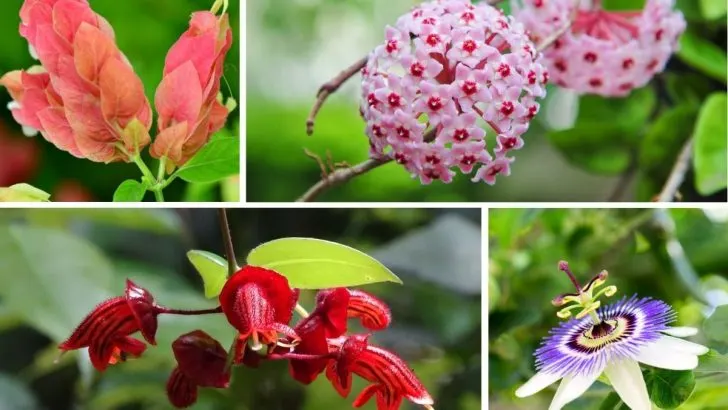Even when winter’s cold breath rattles your windowpanes, there’s no need to say goodbye to the lush and vibrant world of tropical plants.
While these warm-weather wonders can’t brave the northern winter outdoors, they certainly bring a slice of paradise into your home.
Whether it’s their mesmerizing blooms or their striking foliage, tropical houseplants can transform your indoor space into an oasis, especially when the world outside is painted in shades of grey.
Imagine stepping into a room with the vibrant Amaryllis in full bloom, or the subtle, sweet aroma of jasmine wafting through the air, reminding you that warmth is just around the corner.
Growing tropical plants indoors might seem like a daunting task, but with a little attention to their needs, you can create a thriving sanctuary even during the frostiest months.
It’s all about finding the right balance of light, water, and temperature.
1. Amaryllis (Hippeastrum spp.)

When the chilly winds of winter have you bundled up in layers, Amaryllis comes to the rescue with its bold, lily-like blooms, bringing an explosion of vibrant reds or exquisite pinks into your home.
Known for their dramatic flair, these South American natives can be coaxed into blooming indoors, defying the dreariness outside.
Amaryllis is not just a pretty face; it’s resilient too. Cultivate it under the full sun during the warmer months, then allow it to nap by reducing watering, nodding off into dormancy.
A couple of months later, wake it up with some water, and watch it sprout in time for the holiday festivities.
You’ll have a blooming masterpiece roughly 6 to 8 weeks after waking it from its slumber. Insider tip: Commercial varieties often skip the sleepy phase!
2. Cape Primrose (Streptocarpus spp.)

While the scientific name might sound more like something you’d find in a medical dictionary than a list of houseplants, Cape Primrose is a superstar when it comes to low light conditions.
Compact and lush, this plant’s leaves can add a furry touch to your collection, much like its cousin the African violet, but with a unique twist.
These primroses, with their quilted leaves and year-round blooms, weave a tapestry of color in modest light. They don’t crave the spotlight; rather, indirect or partial sunlight is their happy place.
They prefer cool environments, ideally between 60 and 70 degrees Fahrenheit, and flourish under grow lights, such as on a bookshelf lit for reading.
3. Crown of Thorns (Euphorbia milii)
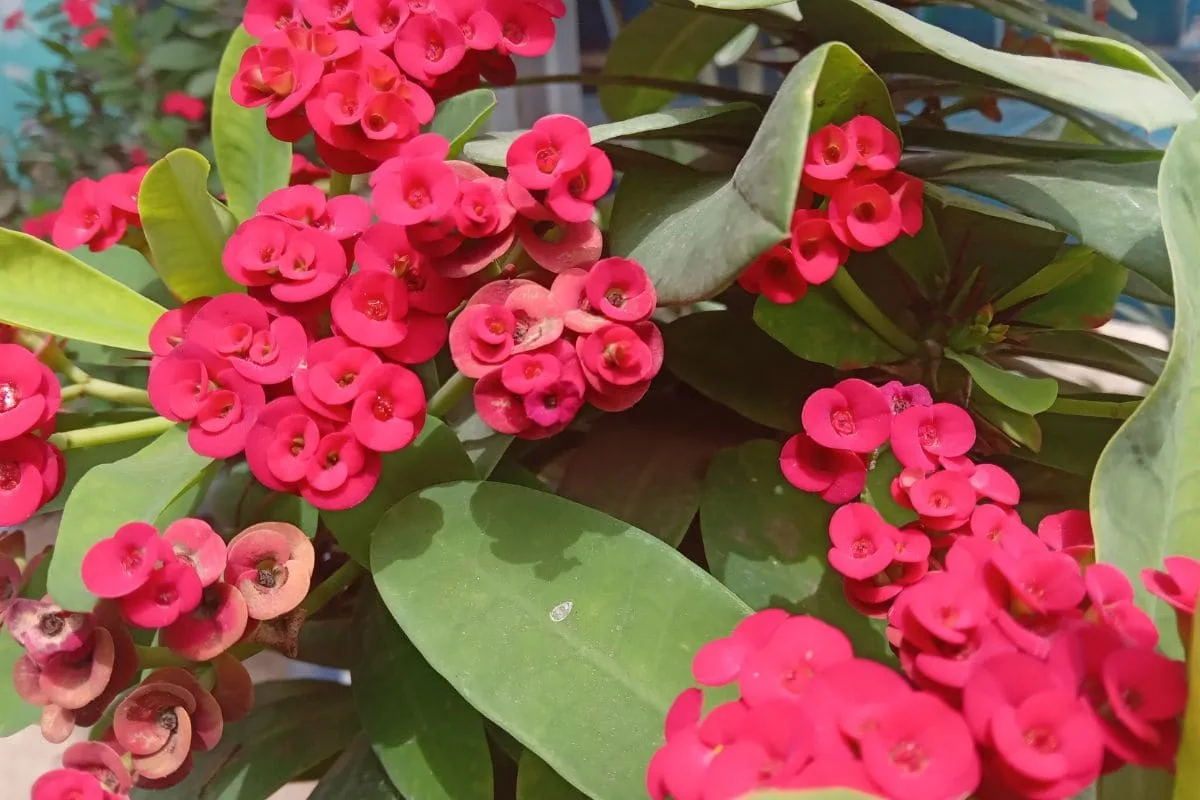
Crown of Thorns may add a prickly element to your indoor garden, but don’t let its appearance fool you. This plant is as self-sufficient as they come, thriving where others wilt. An import from Madagascar, Crown of Thorns withstands the low-humidity conditions of indoor winter air effortlessly while decking itself in colorful bracts.
This hardy plant flaunts its blooms persistently, but prefers at least 3 to 4 hours of sunlight, with more being a bonus. Its modest demands include allowing its soil to dry before watering again—showing you that even the spiky can be gentle if treated right.
Encouraging Blooms
If this tough-love plant doesn’t reward you with blooms, it might just need longer nights. Extending its sleep hours can nudge it into flowering, proving that even the most low-maintenance plants sometimes need a little attention.
Cautionary Tales
As stunning as it is, handle with care! Its spiky exterior and sap can irritate skin and eyes. Think of it as a reminder that even beauty comes with boundaries. And remember, despite their armor, these plants do have a soft side.
4. Cyclamen (Cyclamen persicum)
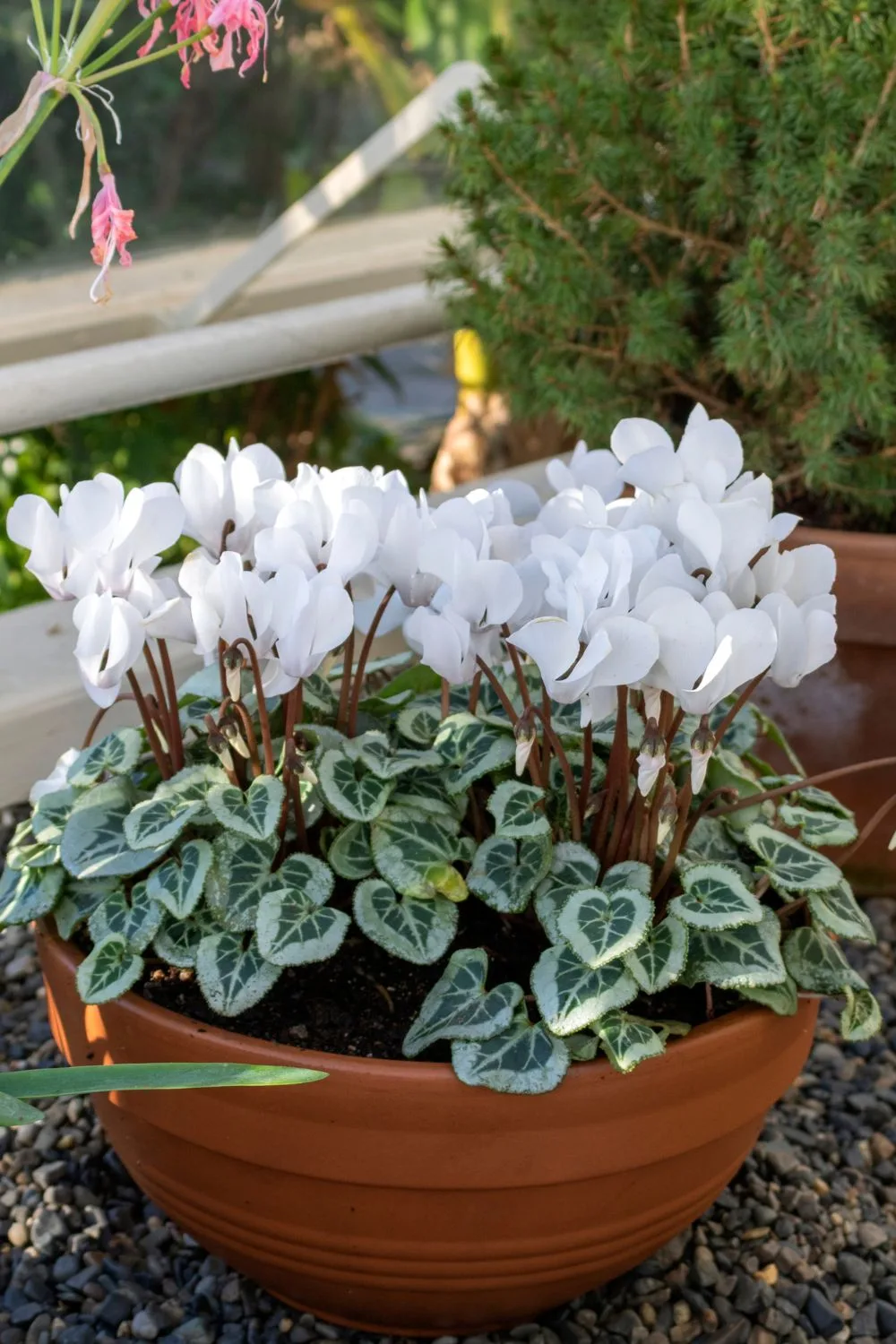
Cyclamens bring a delicate charm to any room, with petals that swirl upward like a dancer’s skirt caught in the wind. These delicate beauties come into their own right in the heart of winter, turning cold months into a time of floral celebration. Their heart-shaped leaves, often displaying gorgeous variegation, add to their appeal.
Place your cyclamens where they receive soft morning rays from an east-facing window. Their delicate nature means they prefer their corm to remain dry when watering, so be gentle and water from the pot’s edge. After their winter parade, let them rest in spring, allowing their corm to go dormant, storing energy for yet another spectacular show.
Seasonal Sensation
Their blooms are like winter’s own fireworks, bringing joy and warmth when the world outside is cloaked in frost—a reminder that beauty can flourish against the odds.
Rhythmic Rest
Cyclamens may be dormant over the summer, resting to store up energy for their next glorious dance. As the summer fades and they begin to sprout once more, a tender touch will coax them back into their vibrant display.
5. Flowering Maple (Abutilon spp.)
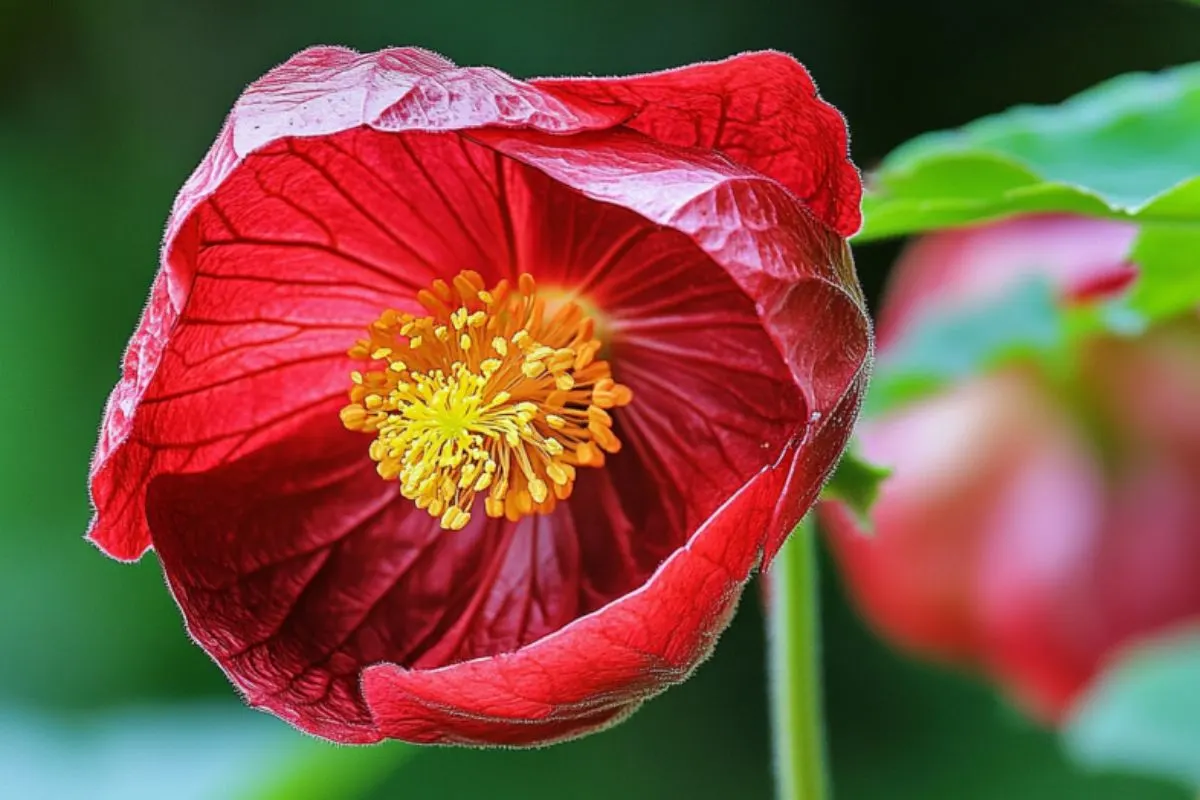
Not a true maple, but aptly named for its foliage, the flowering maple showers indoor spaces with its bell-shaped, dangling blooms throughout the year. It’s a show-off, demanding nothing more than light and a bit of water as it graces your living space with its vibrant appearance.
To achieve near-ceaseless flowering, give it a mix of full to partial light, and let the soil dry out to an inch before the next watering. Much like a pet, it thrives on routine, rewarding you with blossoms once it’s settled into its schedule.
Making the Cut
Keep your flowering maple in check by trimming it back by one-third in spring. This ensures it stays in the game, producing an unending cascade of blooms to brighten your living space, regardless of the season.
A Vibrant Companion
With flowers that add a touch of the exotic, the flowering maple is your ticket to a year-round tropical retreat, making every window a frame for floral theater.
6. Geranium (Pelargonium x hortorum)
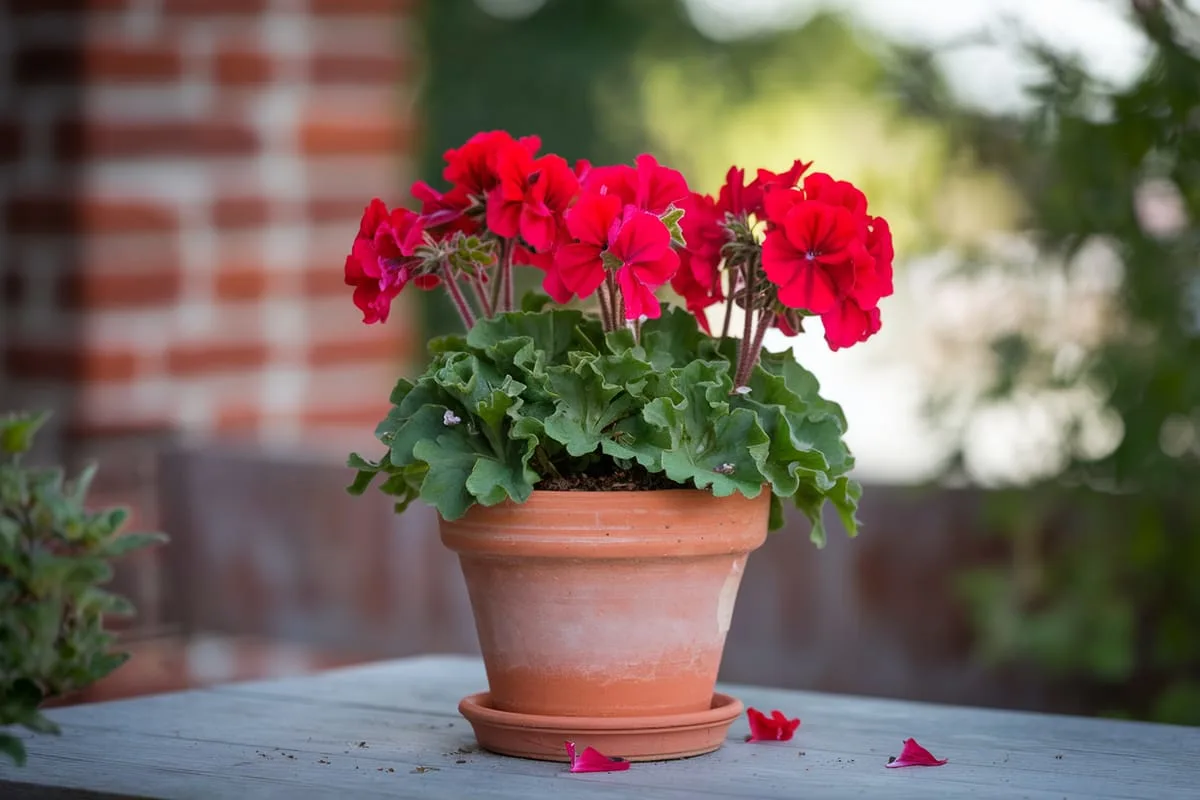
Geraniums have been a household favorite for generations, and for good reason. With their circular leaves and charming blooms, they create a timeless tableau in any indoor space. These annuals are easygoing, thriving on sunny windowsills and maintaining a cheerful disposition even when the days turn short.
To encourage continuous flowering, a warm spot with plenty of sunshine is best. They’re undemanding with water, preferring to dry out a bit between drinks. Give them a trim, and they’ll respond with a fresh flush of flowers, turning your home into a summer garden year-round.
Nostalgic Bloom
Geraniums offer a nostalgic elegance, bringing a touch of the familiar into the home, and reminding us of simpler, sun-drenched times, even in the middle of winter.
Simple Pleasures
There’s an unmatched joy found in the simplicity of geraniums, blending seamless beauty with easy care. They’re like an old friend—always welcome and never out of place.
7. Wax Plant (Hoya spp.)
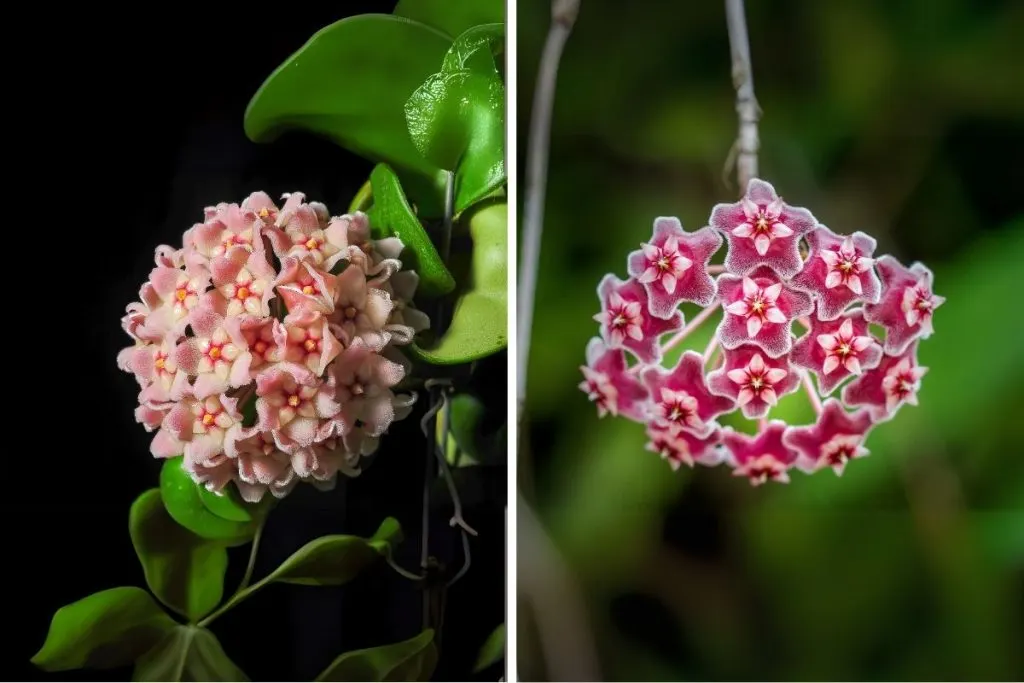
With its thick, glossy leaves and starry blooms, the wax plant brings an exotic touch into your home. This trailing plant, with its clusters of fragrant, waxy flowers, transforms any space into a retreat of tranquility and scent.
Native to the steamy jungles of Asia and Australia, hoyas are surprisingly easygoing. They relish bright, indirect light, and a sip of water when the soil’s surface dries out. During winter, let them take more of a break, extending the time between waterings.
Against the Odds
Hoyas are masters of survival, thriving with minimal fuss. Their blooms, shaped like tiny starbursts, celebrate the smallest victories in growth, reminding you that beauty often requires little beyond patience.
A Timeless Companion
With choices of winter bloomers like H. calycina or perpetual bloomers like H. krohniana, your hoya can keep displaying its wonders year-round, proving itself as a timeless addition to any plant enthusiast’s collection.
8. Passionflower (Passiflora spp.)

The passionflower offers a unique floral spectacle, with blooms that capture the imagination with their intricate designs. Often associated with religious symbolism, these flowers are as captivating in meaning as in appearance.
These climbers need plenty of sunlight and warmth, requiring their soil to dry slightly before another watering session. If you’d like to see winter blooms, opt for varieties like P. miniata, ensuring your indoor garden is a spiritual oasis throughout the year.
Art in Nature
With flowers that seem to tell a story all their own, passionflowers transform any space into a gallery of natural art, blending symbolism with exotic allure.
Overcoming the Cold
Keep passionflowers thriving indoors during the winter, ready to burst into color once again as they bask in the warmth of spring’s light.
9. Shrimp Plant (Justicia brandegeana)
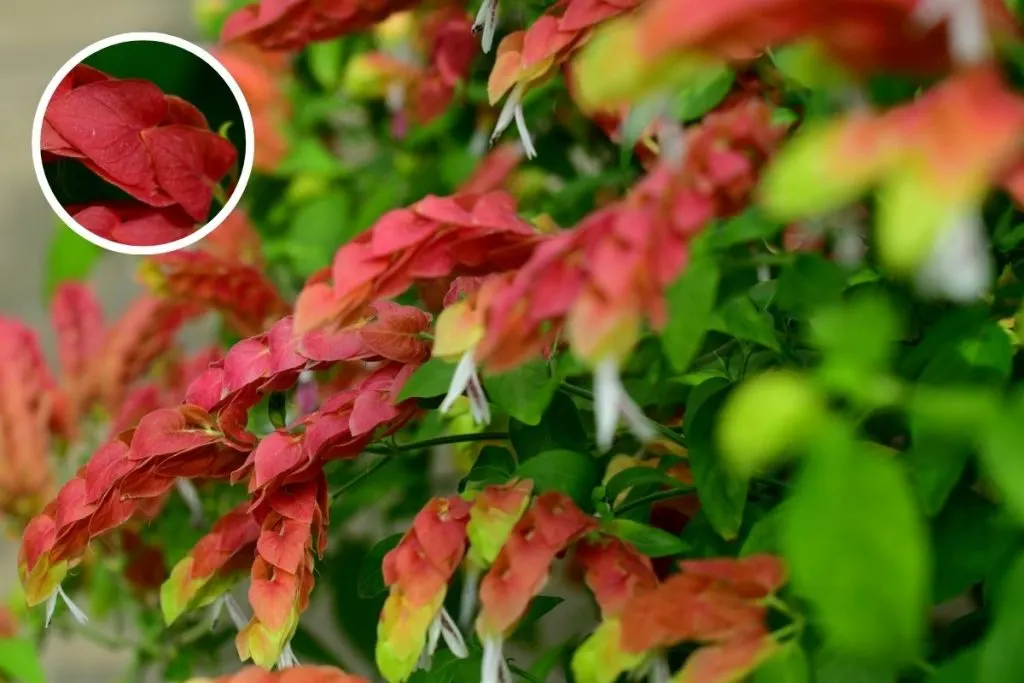
Even amidst a sea of exotic plants, the shrimp plant stands out with its quirky bracts that mimic the appearance of shrimp. This unusual beauty is surprisingly easy to care for and can thrive indoors almost year-round.
With enough light, it flowers continuously; just keep its soil slightly dry between watering. Select from cultivars like Variegata for variegated foliage or ‘Fruit Cocktail’ for unique green bracts with red flowers, both adding a dash of fun to your plant collection.
Curious and Fun
The shrimp plant adds a sense of whimsy to any room, a reminder that nature often defies expectations and provides joy in the most unexpected ways.
Effortless Charmer
It’s a playful spirit of the plant world—a barely-there effort for a full display of personality and color all year long.
10. Winter-Blooming Jasmine (Jasminum polyanthum)
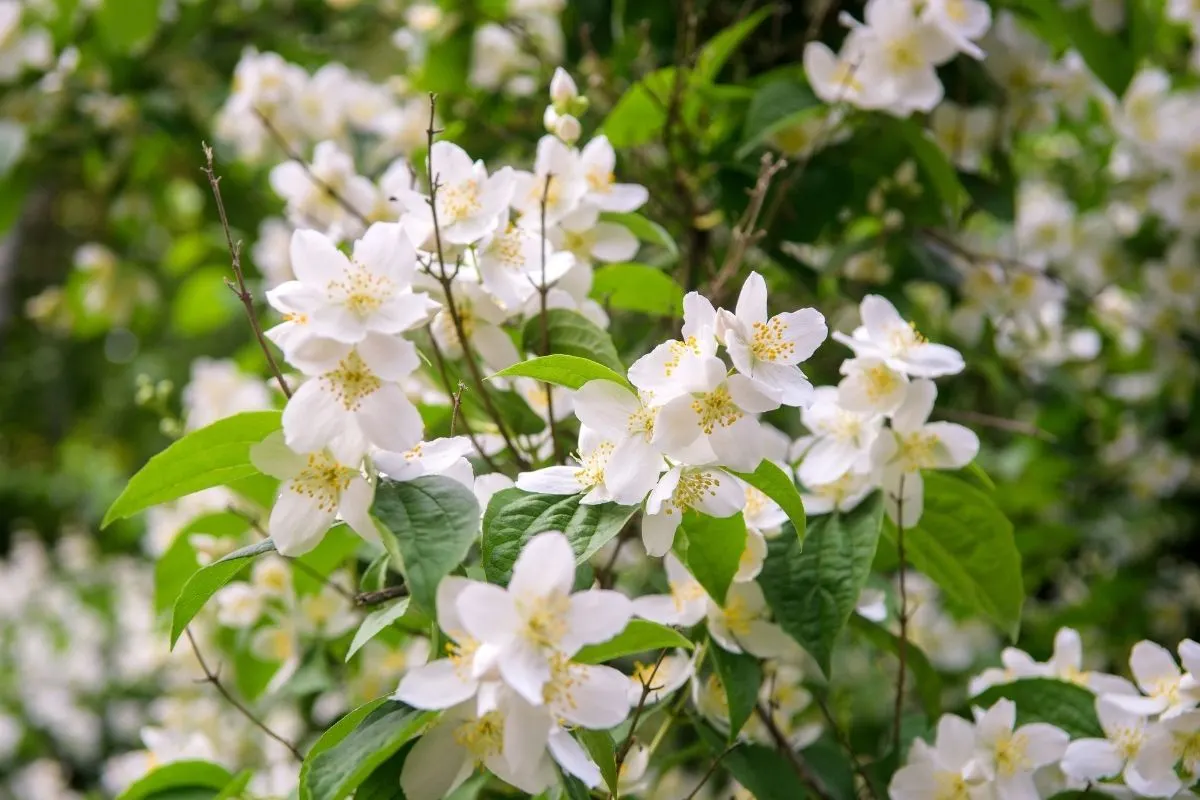
Winter-blooming jasmine invites you into a fragrant paradise, its starry blooms releasing a heady scent that wraps around you like a warm scarf in the chill of February.
To coax it into flowering, let it spend summer in full sun, moving it indoors only after it’s felt the first nips of fall. Indoors, give it a bright, cool spot, and ensure its soil dries slightly between waterings. By providing these conditions, your jasmine will greet you with a fragrant reminder of nature’s resilience.
Embracing the Chill
Jasmine isn’t afraid to embrace the chill, proving that beauty and resilience often walk hand in hand. Its blooms are a sweet promise of spring warmth, even when the world outside is frozen.
The Fragrant Finale
In the realm of winter-blooming plants, jasmine is a star performer, bringing a touch of the exotic and aromatic into your indoor sanctuary, reminding you that winter will soon give way to spring.

